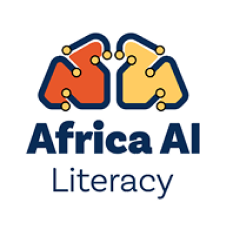In this lesson, you’ll learn more about how to successfully modify the output of an AI tool. Modifying output is an effective strategy for overcoming many of the common limitations of AI tools. You’ll also explore some example outputs and how other educators have changed them to better fit their needs.
Adapt the output
You’ve learned that AI tools require human critical thinking skills to ensure that they’re being used responsibly and not reinforcing unfair bias or spreading misinformation. No AI tool has the depth of experience, practical knowledge, and interactive skills that you do.
When you’re adapting an AI output, there are a few things to consider:
Fact-check the output to avoid mistakes or incorrect information. If you have the appropriate knowledge, you can adapt an output by correcting it instead of iterating on your prompt again.
Edit and augment the content:
You might adjust the text to be more applicable to your organization, expand on important details, or add more examples to help promote learning.
As an educator, your experience and expertise help shape how you organize information for your students. The AI tools you’re using won’t always match how you want to organize material, but you can take the output and organize it how you want it.
Use AI to help develop presentations
Another instance in which it might be useful to modify an AI output is when creating informative and visually appealing presentations. Read about how one educator could do just that:
Hello! I’m a 10th grade English teacher, and I use slideshows during my classes so that students have the presentations as an additional resource to refer to outside of class. While I love providing slideshows for students, it can sometimes be more effective to revise a written idea than to write it from scratch.
While AI is very helpful, it can’t know everything my students have learned in our class or everything they are currently learning — but I do! So, in addition to reviewing and refining my prompts to get a better output, I’ve also started adapting the output myself. For me, it’s the best of both worlds: AI tools help me get started with a presentation outline, and I get to create the exact presentation I want. Better yet, I hear it won’t be long before AI tools can actually develop presentation slides for me!
Even though I know I’m going to adapt the output myself, I still start with an initial prompt to get me started. Then, I like to iterate on my prompt to get the outline as close as I can. You can copy and paste this prompt into an AI tool to test it out:
Prompt:
|
I am a 10th grade English teacher designing a lesson about literary devices. Provide the text on each slide for a presentation about conflict in literature.
|
Next, I revised the prompt to specify that I wanted speaker notes. This prompt worked for me:
Prompt:
| I am a 10th grade English teacher designing a lesson for students about literary devices. Create an outline with speaker notes for a slideshow about conflict in literature. |

